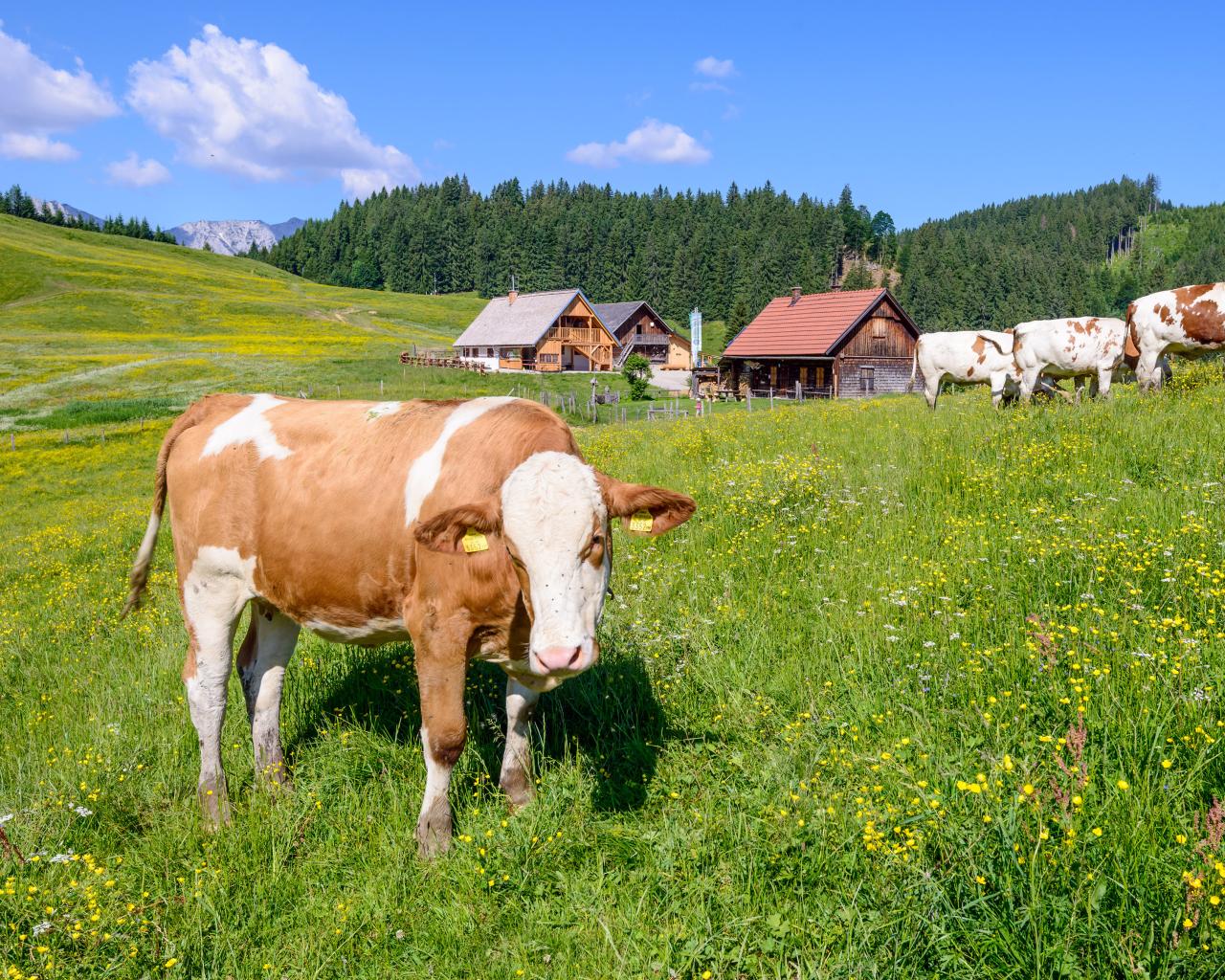If you are traveling with a dog, you should be careful when entering an alpine pasture with cattle!
Alpine pastures are popular hiking destinations at Kalkalpen National Park. However, hikers with dogs should exercise particular caution when visiting alpine pastures, as mother cows can become aggressive. They have a strong maternal instinct. If they feel their calves are threatened, they form a group and are sometimes determined to attack.
- Keep your distance: If possible, stay on the hiking trail and keep at least 20 meters away from the cows. If they are on the hiking trail: walk around them rather than through the middle of the herd.
- Keep dogs on a lead: If dogs run into the herd, dogs are attacked - because cows and bulls perceive them as a particular threat (wolf). Only if the cows attack the leashed dog must it be released immediately. Otherwise, the dog's owner would also run the risk of being taken on the horns.
- Never seek proximity to calves: Mother cows and the herd see this as a threat to their offspring. Do not touch or stroke adult animals either.
- Take the cows' threatening gestures seriously: Lowering the head, scratching and bellowing are clear alarm signals. Keep calm and leave the pasture slowly.



